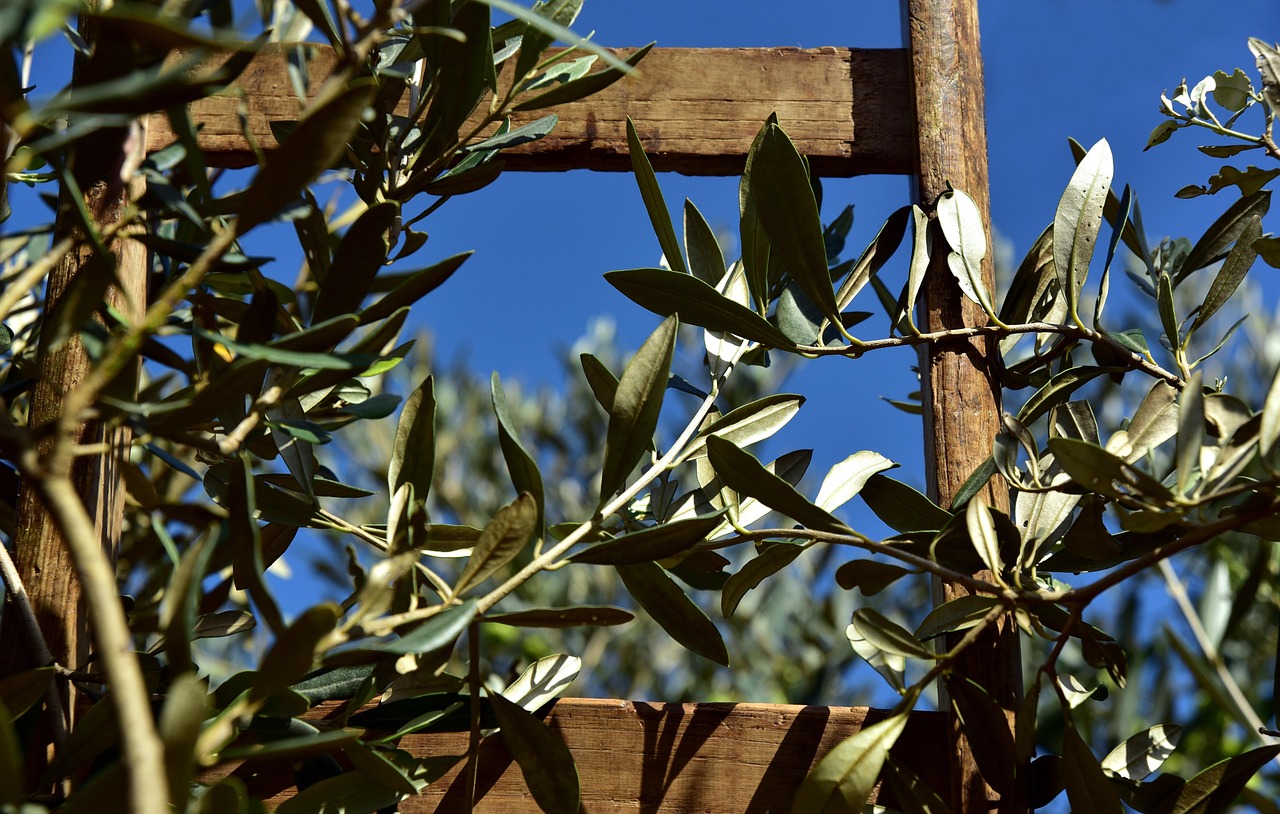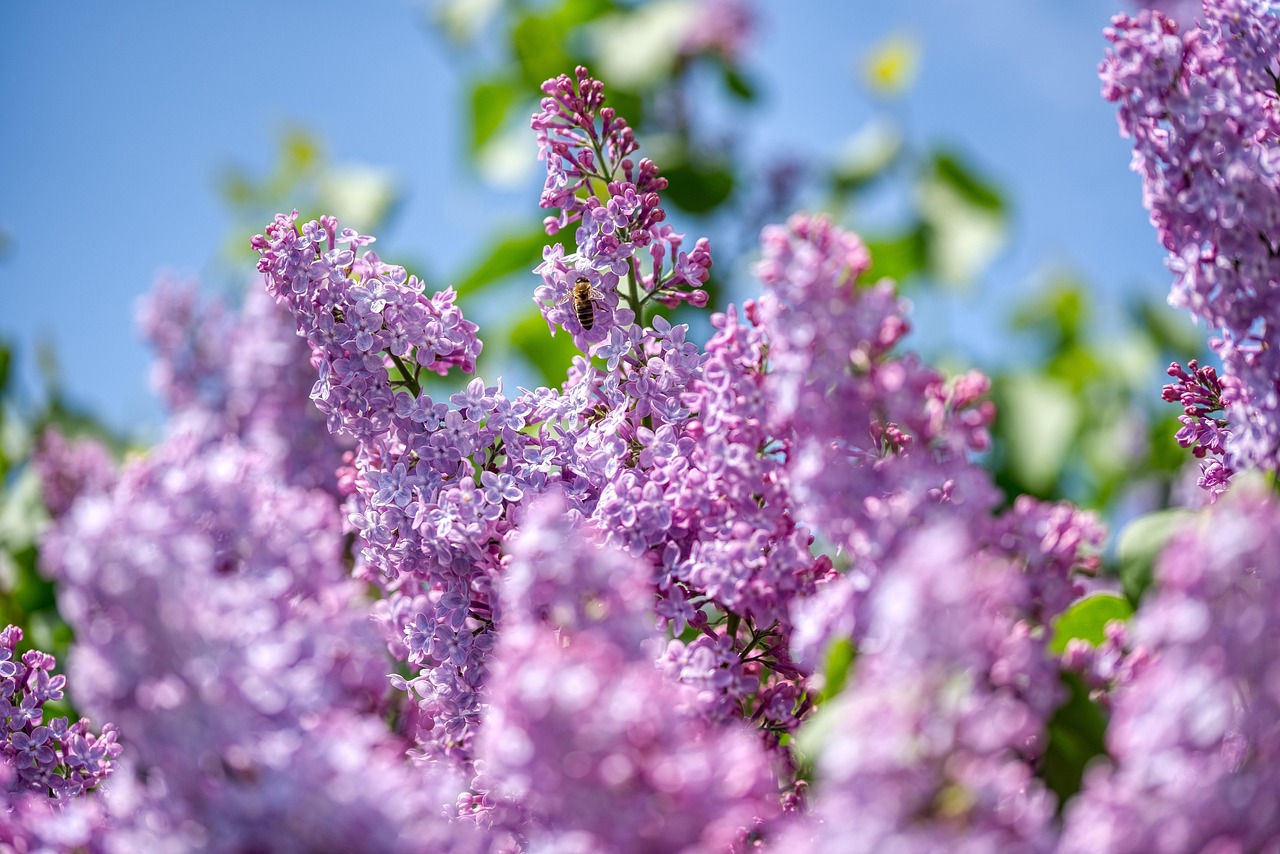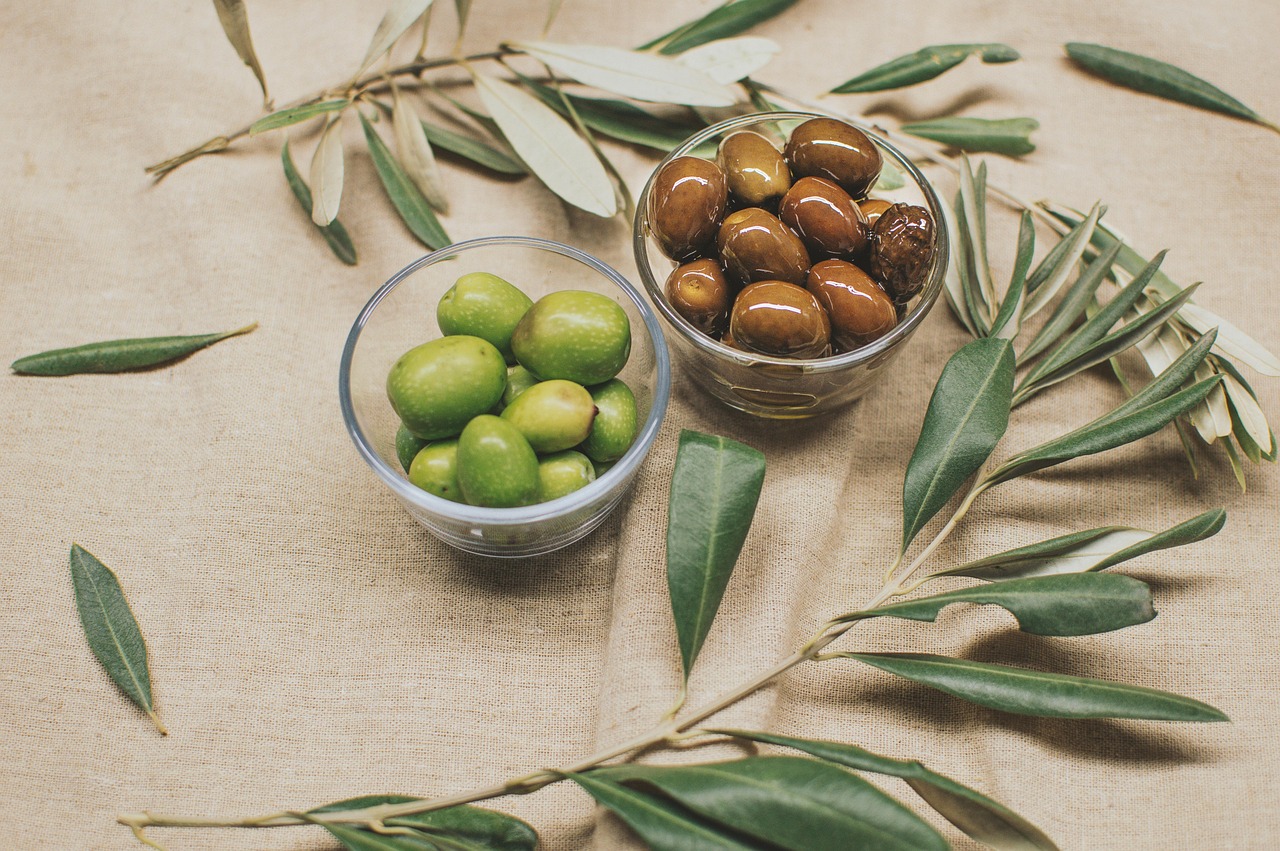Olive tree pruning is essential for increasing olive oil production. Proper pruning improves tree health, optimizes light exposure, and enhances air circulation. These factors contribute to higher fruit yield and better oil quality.
Understanding Olive Tree Pruning
Olive trees are a vital part of Mediterranean agriculture. They not only produce olives but also contribute to the rich flavor of olive oil. Pruning is a crucial practice to ensure the trees remain productive and healthy throughout their lifespan. By removing unwanted branches and shaping the tree, growers can significantly influence the quality and quantity of the olives harvested.

Effective pruning techniques can lead to better fruit development. This is because pruning encourages new growth and helps maintain the tree’s structure. When done correctly, pruning allows for optimal sunlight penetration and air circulation within the canopy, conditions that are essential for healthy olive production.
There are several key benefits associated with proper olive tree pruning:
- Increased sunlight exposure for the leaves
- Improved air circulation within the tree
- Enhanced fruit quality and oil yield
- Reduction of disease and pest infestations
- Management of tree height and shape for easier harvesting
Types of Pruning Techniques
When it comes to pruning olive trees, several techniques can be employed. Each method has its unique advantages, and understanding these can help farmers choose the right approach for their specific needs.

1. Formative Pruning
This technique is typically used in the early years of an olive tree’s life. Formative pruning shapes the tree to establish a strong framework. The goal is to create a balanced structure that will support future growth and fruit production. It involves removing weak branches and encouraging a central leader.
2. Maintenance Pruning
Once an olive tree reaches maturity, maintenance pruning becomes essential. This method focuses on removing dead or diseased wood and thinning out crowded branches. Maintenance pruning helps to keep the tree healthy and productive by ensuring adequate light and air reach the inner parts of the canopy.
3. Renovation Pruning
Renovation pruning is applied to older trees that have become unproductive. This aggressive technique involves cutting back the tree significantly, sometimes up to 50% of its height. Although it may seem drastic, it can rejuvenate an aging tree, stimulate new growth, and ultimately improve olive production.

Optimal Timing for Pruning
The timing of pruning is critical for achieving the best results. Generally, the best time to prune olive trees is in late winter or early spring before new growth begins. This timing allows the tree to heal quickly and promotes vigorous growth during the growing season. However, specific timing can vary based on climate and local conditions.
Here is a simple table outlining the recommended pruning schedule:
| Pruning Type | Recommended Timing | Reason |
|---|---|---|
| Formative Pruning | Late Winter to Early Spring | Encourages healthy structure |
| Maintenance Pruning | Late Winter | Promotes healthy growth |
| Renovation Pruning | Early Spring | Stimulates new growth |
The Role of Tools in Pruning
Using the right tools is essential for effective pruning. Properly maintained tools can make a significant difference in the results achieved. Here are some common tools used in olive tree pruning:

- Hand Pruners: Ideal for small branches and detailed work.
- Loppers: Useful for thicker branches that require more leverage.
- Saws: Necessary for larger branches that cannot be cut with pruners or loppers.
- Safety Gear: Essential for protecting yourself during the pruning process, including gloves and goggles.
In conclusion, understanding the importance of olive tree pruning, along with the various techniques and tools available, can lead to enhanced olive oil production. Properly executed pruning practices not only improve yields but also ensure the long-term health of olive trees.
Pruning Techniques for Different Olive Varieties
Olive trees come in various varieties, each with unique characteristics and growth patterns. Understanding these differences is crucial for effective pruning. Different olive varieties may respond better to certain pruning techniques, influencing both fruit production and the overall health of the tree.
1. European Olive Varieties
European olive varieties, such as ‘Arbequina’ and ‘Frantoio’, are popular for their high-quality oil. These trees often have a bushy growth habit, making them suitable for specific pruning methods.
- Light Pruning: For younger trees, light pruning encourages upward growth and a strong central leader.
- Thinning: Mature trees benefit from thinning out crowded branches to enhance air circulation and sunlight exposure.
2. Mediterranean Olive Varieties
Varieties like ‘Koroneiki’ and ‘Manzanilla’ are well-adapted to Mediterranean climates. These trees can be pruned aggressively without damaging their productivity.
- Aggressive Pruning: Older trees can undergo renovation pruning to rejuvenate growth and increase yields.
- Selective Pruning: This involves cutting back some branches while preserving others to maintain a balanced canopy.
3. North American Olive Varieties
In North America, varieties such as ‘Mission’ and ‘Ascolano’ are becoming more common. These trees may require different approaches due to their adaptability to varying climates.
- Regular Maintenance: Consistent maintenance pruning can help North American olives thrive in diverse growing conditions.
- Structural Pruning: Establishing a strong framework in young trees will support future growth and fruit production.
The Impact of Pruning on Fruit Quality
Pruning not only affects the quantity of olives produced but also has a significant impact on the quality of the fruit. Well-pruned trees generally yield higher quality olives, which results in superior olive oil.
Factors Influencing Fruit Quality
- Sunlight Exposure: Pruning allows for better light penetration, enhancing the ripening process of olives.
- Pest Control: Improved air circulation reduces humidity levels, making trees less susceptible to pests and diseases.
- Nutrient Distribution: Properly pruned trees can better allocate nutrients to developing fruits, leading to higher oil content.
Research Findings
Studies have shown a direct correlation between pruning practices and fruit quality. For instance, a study conducted by agricultural researchers found that:
| Pruning Practice | Oil Yield Increase (%) | Fruit Quality Rating (1-10) |
|---|---|---|
| Light Thinning | 15% | 8 |
| Aggressive Renovation | 25% | 9 |
| No Pruning | 0% | 6 |
Caring for Olive Trees Post-Pruning
After pruning, olive trees require specific care to recover and thrive. Proper post-pruning care ensures that the tree heals well and continues to produce olives effectively.
Watering Practices
Olive trees need adequate moisture after pruning. However, overwatering can lead to root rot. Here are some watering tips:
- Monitor Soil Moisture: Check the soil regularly to determine when watering is necessary.
- Avoid Overwatering: Water deeply but infrequently to encourage deep root growth.
Nutrient Management
Nutrients play a vital role in recovery after pruning. Fertilization can help promote healthy regrowth. Consider the following:
- Use Balanced Fertilizers: Apply fertilizers that contain nitrogen, phosphorus, and potassium for optimal growth.
- Organic Options: Compost or organic fertilizers can improve soil health and support tree recovery.
Pest and Disease Management Post-Pruning
Pests and diseases can threaten olive trees, especially after they have been pruned. Implementing pest management strategies is crucial during this vulnerable time.
- Regular Inspections: Check trees frequently for signs of pests or diseases.
- Pest Control Measures: Use organic pesticides or insecticidal soaps if infestations are detected.
Caring for olive trees properly after pruning not only supports recovery but also enhances future production. By implementing these practices, growers can ensure that their olive trees remain healthy and productive for years to come.
Seasonal Considerations for Pruning Olive Trees
Understanding the seasonal cycles of olive trees is crucial for effective pruning practices. Each season presents unique opportunities and challenges that can influence the success of the pruning process.
Winter Pruning
Winter is often considered the best time for pruning olive trees. During this period, trees are dormant, which minimizes stress and encourages healthy regrowth in spring.
- Benefits of Winter Pruning:
- Reduced sap flow, which helps prevent bleeding from cuts.
- Easier visibility of the tree structure for making informed cuts.
- Encouragement of new growth as the weather warms.
- Timing: Aim to prune in late winter, just before new growth begins.
Spring Pruning
Spring is a time of active growth for olive trees. While pruning can still be beneficial during this season, it should be done with caution.
- Benefits and Risks:
- Spring pruning can help shape young trees and remove any dead or diseased wood.
- However, excessive pruning may disrupt the tree’s energy allocation to new growth.
- Best Practices: Focus on light pruning to avoid stressing the tree.
Summer Pruning
Summer pruning is less common but can be effective in certain situations. It typically focuses on maintenance rather than major cuts.
- When to Prune: Consider light pruning during early summer when growth is vigorous.
- Goals:
- Remove suckers and unwanted shoots to maintain shape.
- Thin out branches to improve air circulation and sunlight exposure.
Fall Pruning
Fall is generally not recommended for extensive pruning. However, light maintenance tasks can still be performed.
- Considerations:
- Avoid heavy pruning to minimize stress as the tree prepares for winter dormancy.
- This is a good time to assess the tree’s health and make minor adjustments.
The Role of Climate in Pruning Practices
The climate in which olive trees are grown significantly impacts pruning strategies. Factors such as temperature, humidity, and rainfall should be considered when planning pruning activities.
Hot Climates
Regions with high temperatures can affect growth patterns and tree health. Here are some strategies for pruning in hot climates:
- Avoid Stressful Conditions: Prune during cooler parts of the day, such as early morning or late afternoon.
- Drought Management: Ensure adequate watering before and after pruning to reduce stress on the tree.
Cooler Climates
In cooler regions, olive trees may experience different challenges. Pruning practices should adapt accordingly:
- Timing Adjustments: Winter pruning may need to be done earlier to avoid extreme cold damage to fresh cuts.
- Focus on Disease Prevention: Increased moisture in cooler climates can lead to fungal diseases; ensure proper spacing and airflow during pruning.
The Economic Impact of Pruning on Olive Oil Production
The economic implications of effective pruning practices are significant for olive oil producers. Understanding how pruning affects costs and yields can help growers make informed decisions.
Cost-Benefit Analysis
Investing in proper pruning techniques can lead to increased profitability. Here are some points to consider:
- Initial Investment: Costs associated with labor and tools for pruning can be substantial.
- Long-Term Savings: Well-pruned trees often yield higher quality olives, resulting in better oil prices and reduced pest management costs.
Yield Improvement
A well-executed pruning strategy can significantly enhance olive yields. Research has shown that:
| Pruning Method | Average Yield Increase (%) | Oil Quality Improvement (1-10 Scale) |
|---|---|---|
| Light Thinning | 10% | 7 |
| Aggressive Renovation | 30% | 9 |
| No Pruning | -5% | 5 |
The data clearly illustrates that implementing effective pruning methods can lead to higher yields and better quality oil, ultimately benefiting the grower’s bottom line.
The Future of Olive Tree Pruning Techniques
The field of agriculture is continuously evolving, and olive tree pruning is no exception. Advances in technology and research are shaping new approaches to enhance olive oil production further.
Sustainable Practices
Sustainability is becoming increasingly important in agriculture. New pruning techniques focus on reducing waste and promoting ecological balance:
- Natural Growth Patterns: Emphasizing minimal intervention to allow trees to grow naturally while still maintaining productivity.
- Biodiversity Encouragement: Incorporating companion planting strategies that support pest control and soil health.
Precision Agriculture
The integration of technology in agriculture is paving the way for precision farming techniques:
- Drones and Imaging: Utilizing drones equipped with imaging technology to assess tree health and determine optimal pruning strategies.
- Sensors for Moisture Monitoring: Employing soil moisture sensors to better manage irrigation practices post-pruning.
The future of olive tree pruning looks promising with these advancements, ensuring that growers can maintain healthy trees while maximizing olive oil production efficiently and sustainably.
Emerging Trends in Olive Oil Production
As the demand for olive oil continues to grow globally, innovative practices in olive tree pruning and cultivation are becoming essential. Understanding these trends can provide valuable insights for olive growers aiming to enhance their production.
Organic Farming Practices
Organic farming is gaining traction among olive oil producers. This approach emphasizes the use of natural inputs and sustainable practices. Key aspects include:
- No Synthetic Chemicals: Organic growers avoid synthetic fertilizers and pesticides, relying instead on natural alternatives that promote soil health.
- Soil Health Management: Practices such as cover cropping and composting improve soil structure, encouraging healthy root development and tree growth.
Adopting organic practices not only benefits the environment but can also attract a premium price for the resulting olive oil, appealing to health-conscious consumers.
Agroforestry Approaches
Integrating olive cultivation with other agricultural practices through agroforestry is another emerging trend. This method promotes biodiversity and can enhance overall farm productivity. Key components include:
- Diverse Cropping Systems: Planting companion crops alongside olive trees can improve soil fertility and pest control.
- Shade Management: Utilizing taller trees or structures to provide shade can optimize microclimates for young olive trees.
Agroforestry not only enhances the sustainability of olive production but also provides additional sources of income for farmers.
Consumer Trends and Preferences
As consumer preferences evolve, so too must olive growers adapt their practices. Understanding these trends can help producers align their offerings with market demands:
- Health Benefits Awareness: Many consumers are increasingly aware of the health benefits associated with olive oil, such as heart health and anti-inflammatory properties.
- Traceability and Transparency: Consumers are seeking oils that come with a clear story about their origin and production methods, which can influence purchasing decisions.
By emphasizing quality over quantity and providing transparency in production methods, olive growers can better meet consumer expectations.
Final Thoughts
The art and science of olive tree pruning are vital components in enhancing olive oil production. Through careful management and innovative practices, growers can significantly influence both the quantity and quality of their harvest. Understanding the various pruning techniques, seasonal considerations, and the impact of climate will empower producers to make informed decisions that promote healthy trees and high-quality olives.
Furthermore, by embracing emerging trends such as organic farming, agroforestry, and consumer preferences for transparency, olive growers can position themselves competitively in the marketplace. The future of olive oil production looks bright, driven by sustainability and quality-focused practices that benefit both the environment and consumers.
Ultimately, successful olive cultivation hinges on a combination of traditional knowledge and modern advancements. By applying effective pruning techniques alongside innovative farming practices, growers can ensure that their olive trees not only thrive but also contribute to the rich legacy of olive oil production for generations to come.
